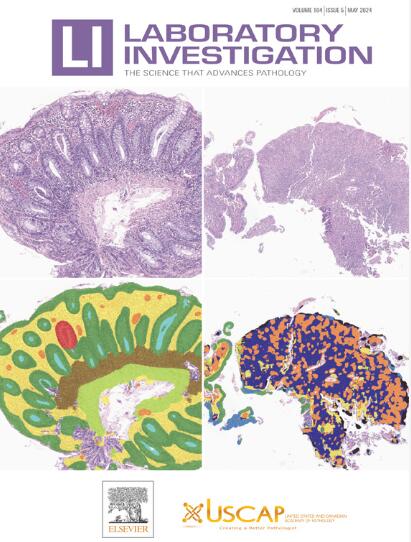Detailed Characterization and Comparison of Mouse Models for Cholangiocarcinoma
IF 4.2
2区 医学
Q1 MEDICINE, RESEARCH & EXPERIMENTAL
引用次数: 0
Abstract
Cholangiocarcinoma (CCA) is an aggressive malignancy that originates in the bile ducts and is characterized by late-stage diagnosis and limited treatment options. CCA accounts for approximately 10% to 15% of primary liver tumors. Recent genetic studies have shed new light on this disease, exploring CCA’s complexity and finding more effective treatment strategies, particularly based on identifying actionable mutations. Various mouse models for CCA have been established; however, the extent to which these models reflect the complexity of human is not well investigated. Therefore, this study aimed to characterize the available mouse models for CCA studies and compare their characteristics, advantages, and challenges in resemblance to human CCA. We applied tissue-based techniques using classical hematoxylin and eosin, Sirius red, and immunohistochemistry of 16 markers for in-depth characterization of tumor cells, and the tumor microenvironment of 11 different mouse models. Our findings demonstrate that CCAs present with various tumor subtypes, tumor growth patterns, morphologic subtypes, and tumor microenvironment activity. Furthermore, we report here that neoplastic lesions other than CCA, such as hepatocellular carcinoma and nonneoplastic changes in the liver parenchyma (eg, steatosis), occur with significant differences among the investigated models. Nine out of 11 investigated models were suitable for CCA studies as they resemble human CCA features. Overall, our data show that mouse models of CCA represent a valid tool to investigate this deadly disease, but they should be carefully selected, depending on the study’s aims and targets in advance.
胆管癌小鼠模型的详细表征和比较。
胆管癌(CCA)是一种起源于胆管的侵袭性恶性肿瘤,其特点是晚期诊断和治疗选择有限。CCA约占原发性肝脏肿瘤的10-15%。最近的遗传学研究对这种疾病有了新的认识,探索了CCA的复杂性,并找到了更有效的治疗策略,特别是在确定可操作突变的基础上。建立了多种CCA小鼠模型;然而,这些模型在多大程度上反映了人类的复杂性还没有得到很好的研究。因此,本研究旨在对CCA研究的现有小鼠模型进行表征,并比较它们与人类CCA相似的特点、优势和挑战。我们采用基于组织的技术,使用经典苏木精和伊红(H&E)、天狼星红和16种标记物的免疫组织化学,深入表征了11种不同小鼠模型的肿瘤细胞和肿瘤微环境(TME)。我们的研究结果表明,CCAs具有多种肿瘤亚型、肿瘤生长模式、形态亚型和TME活性。此外,我们在这里报告了CCA以外的肿瘤病变,如肝细胞癌和肝实质的非肿瘤性改变(如脂肪变性),在所研究的模型中存在显著差异。11个被调查的模型中有9个适合于CCA研究,因为它们类似于人类CCA特征。总的来说,我们的数据表明,CCA小鼠模型是研究这种致命疾病的有效工具,但应该根据研究的目的和目标事先仔细选择。
本文章由计算机程序翻译,如有差异,请以英文原文为准。
求助全文
约1分钟内获得全文
求助全文
来源期刊

Laboratory Investigation
医学-病理学
CiteScore
8.30
自引率
0.00%
发文量
125
审稿时长
2 months
期刊介绍:
Laboratory Investigation is an international journal owned by the United States and Canadian Academy of Pathology. Laboratory Investigation offers prompt publication of high-quality original research in all biomedical disciplines relating to the understanding of human disease and the application of new methods to the diagnosis of disease. Both human and experimental studies are welcome.
 求助内容:
求助内容: 应助结果提醒方式:
应助结果提醒方式:


